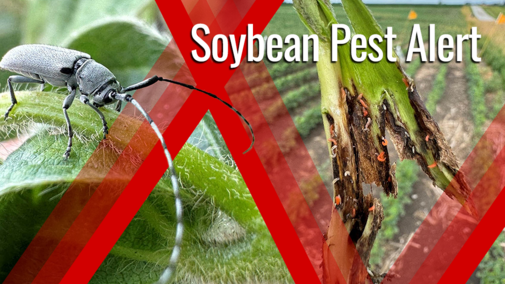Soybean gall midge, Dectes stem borer and plant diseases are key threats to soybean production in Nebraska. In early July and August, we provided updates across nine sites in the state regarding soybean gall midge larval abundance, Dectes stem borer adult activity, and plant diseases.
In this article, we provided an update on data and observations of these pests collected Aug. 11-25 at nine sites in Nebraska.
Highlights
- Soybean gall midge larvae counts declined at all sites, which is expected at this point in the season.
- Wilted and dead plants from soybean gall midge increased at most sites.
- Dectes stem borer punctures declined at all sites except Crete; larval counts increased at five of the nine sites.
- Phytophthora was found only at two sites and in lower rates.
- Co-occurrences of these pests within the same plant occurred at four sites, even on sites with lower pest and disease pressure.
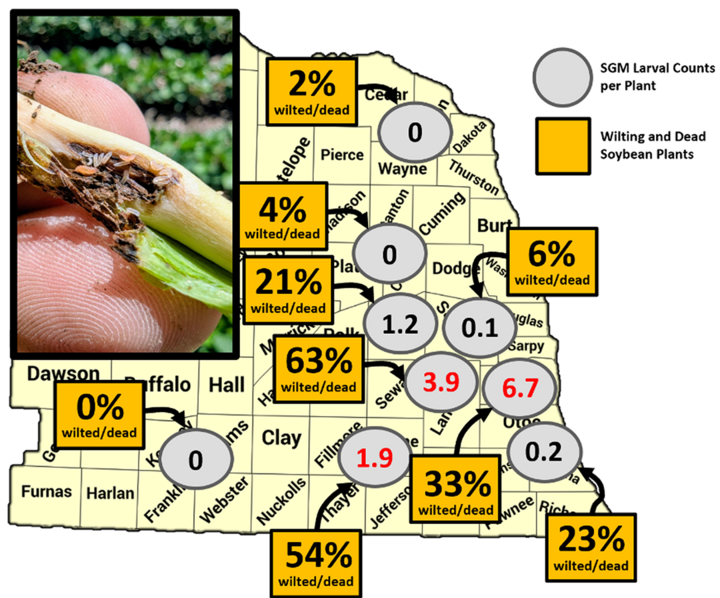
Soybean Gall Midge
- Larvae were found in all sites except for Adams County, like the last report (Figure 1).
- Southeast Nebraska sites had the highest larvae/plant counts, although they are very low when compared to July’s numbers.
- At least 20% of the plants were wilted or dead in central and southeastern Nebraska (Figure 1).
- Larval counts are expected to drop later in the season as harvest approaches.
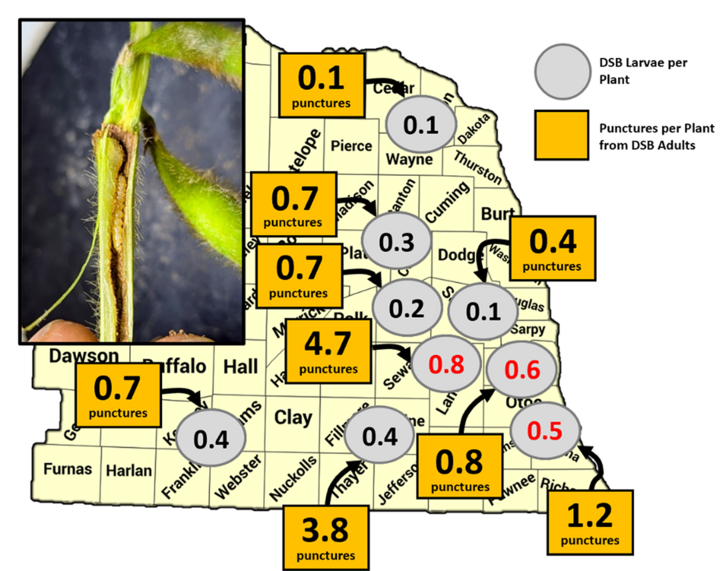
Dectes Stem Borer
- Punctures are small grooves made by the female Dectes beetle on the petiole for both feeding and egg-laying purposes.
- Not all punctures result in eggs.
- Adult activity was detected in all sites (Figure 2), following the pattern observed in the last report.
- Southeast and south-central portions of the state had higher incidence of larvae averaging 50%, while north sites averaged 18%.
- Most of the larvae moved from the petiole to the main stem.
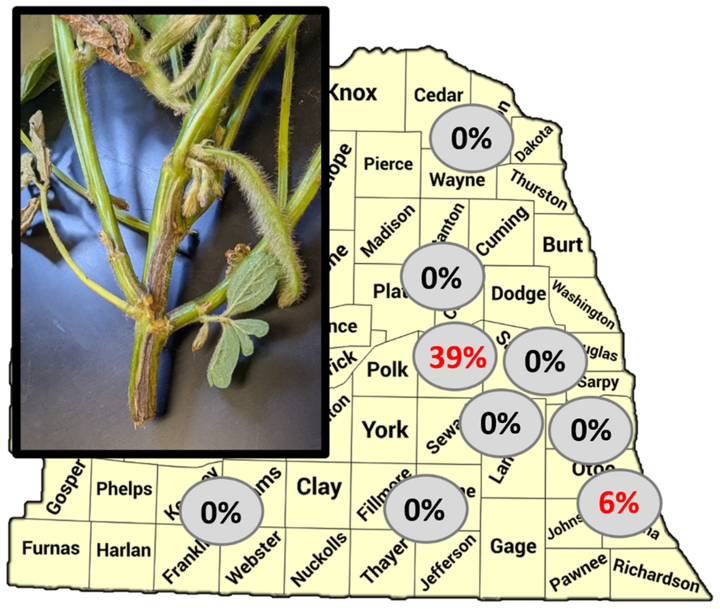
Plant Diseases
- Phytophthora (Figure 3) was present at two sites.
- Soybean sudden death syndrome, downy mildew, frogeye leaf spot and white mold were also found but in low frequencies.
- The frequency of plants with Phytophthora did not increase at any of the sites.
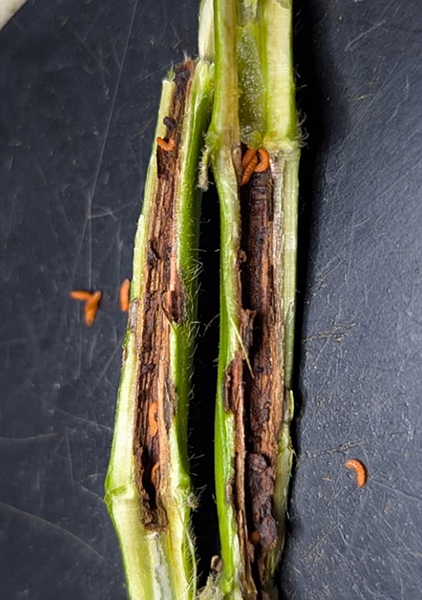
Co-Occurrence of Pests
- In this collection, fewer soybean gall midge larvae were found associated with Phytophthora symptomatic plants.
- Dectes and soybean gall midge were found in the same petiole, and in some cases, in the same stem gallery (Figure 4) on all sites except Adams and Colfax counties.
- More soybean gall midge larvae were found in the Dectes galleries than July’s observations.
The next article will be on soybean yields and Dectes girdling, so watch for an article in October.
For more information on soybean gall midge, visit the Soybean Gall Midge Alert Network.
